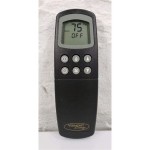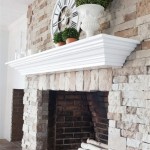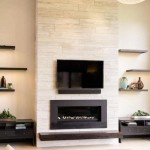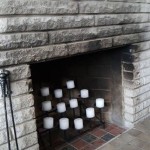Gas Fireplace Insulated Cover: Enhancing Efficiency and Safety
A gas fireplace provides warmth and ambiance to a living space. However, the design of many gas fireplaces can lead to substantial heat loss when not in use. This heat loss occurs through the chimney or venting system, essentially turning the fireplace into a conduit for cold air to enter the home. This issue is particularly prevalent in colder climates, significantly impacting energy efficiency and potentially increasing heating costs. A gas fireplace insulated cover offers a solution to mitigate this problem, providing a layer of protection against heat loss and improving the overall performance of the appliance.
The purpose of a gas fireplace insulated cover is to create a barrier that minimizes airflow through the fireplace when it is not operating. This barrier effectively seals off the opening, preventing warm air from escaping the house and cold air from entering. These covers are typically constructed from materials that possess high insulation properties, such as fiberglass, mineral wool, or specialized reflective materials. The choice of material often depends on the specific design of the fireplace and the desired level of insulation.
Understanding Heat Loss in Gas Fireplaces
Heat loss in gas fireplaces is primarily attributable to two phenomena: conduction and convection. Conduction refers to the transfer of heat through a material. Fireplace components, particularly those made of metal or glass, can conduct heat away from the living space and into the surrounding structure. Convection, on the other hand, involves the transfer of heat through the movement of fluids (air in this case). The chimney or venting system of a fireplace creates a pathway for air to circulate, allowing warm air to rise and escape while simultaneously drawing in cold air from outside. This constant airflow results in a significant loss of heat, especially during the winter months.
The design of the fireplace itself also plays a crucial role in determining the extent of heat loss. Fireplaces with large openings or inefficient venting systems are more prone to heat loss than those with tighter seals and optimized designs. Furthermore, the presence of gaps or cracks around the fireplace surround can exacerbate the problem by allowing air to infiltrate the home. Older fireplaces, in particular, often suffer from these issues due to wear and tear or outdated construction techniques.
The impact of heat loss on energy consumption can be significant. A gas fireplace that is not properly insulated can effectively counteract the efforts of the home's heating system, forcing it to work harder to maintain a comfortable temperature. This increased workload translates into higher energy bills and a greater environmental impact. Furthermore, the drafts created by the influx of cold air can make the living space feel less comfortable, even when the heating system is operating at full capacity.
To quantify the extent of heat loss, energy audits can be performed to assess the overall efficiency of the fireplace and identify areas where improvements can be made. These audits typically involve measuring the temperature and airflow around the fireplace to determine the amount of heat that is being lost. The results of the audit can then be used to recommend specific solutions, such as installing an insulated cover or sealing any gaps or cracks around the fireplace.
Benefits of Using a Gas Fireplace Insulated Cover
The primary benefit of using a gas fireplace insulated cover is the reduction in heat loss, which directly translates into energy savings. By preventing warm air from escaping through the chimney or venting system, the cover helps to maintain a more consistent temperature in the home, reducing the workload on the heating system. This, in turn, leads to lower energy bills and a smaller carbon footprint.
In addition to energy savings, an insulated cover can also improve the overall comfort of the living space. By eliminating drafts and preventing cold air from entering the home, the cover helps to create a more comfortable and inviting environment. This is particularly beneficial in areas with harsh winters, where the drafts from an uninsulated fireplace can make the living space feel significantly colder.
Another advantage of using an insulated cover is that it can help to protect the fireplace from damage. By sealing off the opening, the cover prevents dust, debris, and insects from entering the fireplace, which can help to prolong its lifespan. Furthermore, the cover can also help to prevent moisture from entering the fireplace, which can lead to rust and corrosion.
The installation of a gas fireplace insulated cover is typically a simple and straightforward process. Many covers are designed to be easily installed and removed as needed, allowing homeowners to quickly adapt to changing weather conditions. The covers are also available in a variety of sizes and styles to fit different types of fireplaces, ensuring a proper and secure fit. Some covers even have magnets that attach directly to the fireplace frame, providing a secure and airtight seal.
Moreover, gas fireplace insulated covers can contribute to improved indoor air quality. By preventing the backdraft of exhaust gases when the fireplace is off, they help maintain a healthier living environment. Backdrafting can occur when the chimney doesn't vent properly, potentially drawing hazardous combustion byproducts into the home. An insulated cover significantly reduces this risk.
Selecting the Right Insulated Cover and Installation Considerations
When selecting a gas fireplace insulated cover, it is important to consider the specific dimensions of the fireplace opening. The cover should be sized to fit snugly against the fireplace surround, creating a tight seal that prevents air leakage. The material of the cover should also be carefully considered, as different materials offer varying levels of insulation. Fiberglass and mineral wool are common choices due to their high insulation values and affordability. Reflective materials, such as aluminized fabric, can further enhance insulation by reflecting radiant heat back into the room.
The ease of installation and removal is another important factor to consider. Some covers are designed to be permanently installed, while others are designed to be easily removed and replaced as needed. The choice between these options depends on the individual homeowner's preferences and the frequency with which the fireplace is used. For fireplaces that are used frequently, a removable cover may be more convenient. For fireplaces that are rarely used, a permanently installed cover may be a better option.
Before installing the cover, it is essential to ensure that the fireplace is completely cool and that the gas supply is turned off. This is to prevent any accidents or injuries during the installation process. The installation process typically involves simply placing the cover over the fireplace opening and securing it in place. Some covers may require the use of adhesive strips or magnetic fasteners to ensure a tight seal.
Regular maintenance of the insulated cover is also important to ensure its continued effectiveness. The cover should be inspected periodically for any signs of damage or wear and tear. If any damage is detected, the cover should be repaired or replaced as needed. The cover should also be cleaned regularly to remove any dust or debris that may have accumulated on its surface.
Beyond the cover itself, consider inspecting the fireplace damper. While many modern gas fireplaces have a sealed combustion design which minimizes the need for a functional damper, older or improperly installed units might still rely on one. Ensuring the damper closes tightly when the fireplace is not in use contributes significantly to reducing heat loss, complementing the benefits of an insulated cover. Sometimes, an old or damaged damper is the primary culprit for heat loss, even before considering an insulated cover.
Finally, it is important to remember that a gas fireplace insulated cover is not a substitute for proper fireplace maintenance. Regular inspections and cleaning are still necessary to ensure the safe and efficient operation of the fireplace. Furthermore, the cover should never be used when the fireplace is in operation, as this could create a fire hazard.

2pcs Magnetic Fireplace Draft Stopper Vent Covers Screen Insulation Blocker For Winter Indoor Prevent Cold Air And Heat Loss Black 30 X 4in Today S Best Daily Deals Temu

Fireplace Vent Cover Magnetic Draft Stopper Temu

Turbro Magnetic Fireplace Cover 39 W X 32 H Draft Blocker Indoor Vent Insulation Stopper Prevent Heat And Cold Air Loss Fits For Iron Brick Frame With Sticky

3 Size Fireplace Fire Mat For Area Carpet Protection Flame Ant Fiberglass Insulation Blanket Fruugo Kr

2pcs Magnetic Fireplace Draft Stopper Vent Covers Screen Insulation Blocker For Winter Indoor Prevent Cold Air And Heat Loss Black 30 X 4in Today S Best Daily Deals Temu
Gas Fireplace Venting Explained Heat Glo

1pc Black Fireplace Windproof Cover Prevents Heat Loss Airflow Inside Furnace 115cm 87cm 100cm 82cm Insulation Barrier Curtain Home Kitchen Temu

Fixing A Draft Fireplace Doghouse Kickout Diy Home Improvement Forum

Keith Porter Insulation Fireplaces

Walls Behind Fireplaces Building America Solution Center
Related Posts








